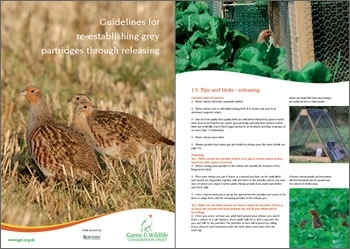 Releases of individuals into areas where they have occurred previously (re-introductions) have become an increasingly popular conservation method to restore locally extinct species. In an attempt to impose some order into what could become chaos, the International Union for Conservation of Nature (IUCN, then World Conservation Union) devised a set of guidelines in 1995.
Releases of individuals into areas where they have occurred previously (re-introductions) have become an increasingly popular conservation method to restore locally extinct species. In an attempt to impose some order into what could become chaos, the International Union for Conservation of Nature (IUCN, then World Conservation Union) devised a set of guidelines in 1995.
Introduction
- Re-introductions are always lengthy, complex and expensive.
Feasibility
- The species must be shown to have been previously present in the region.
- After re-establishment the species should be self-maintaining.
- There needs to be a sound knowledge of the species’ natural history.
- There should be an understanding of the likely ecological effects.
- The re-introduction should be modelled to predict its outcome.
- A Population Viability Analysis should be done.
Appropriateness
- Suitable sites with good habitat within the former range must exist.
- The cause of the original extinction must be identified and eliminated.
Provenance
- Re-introduced animals should be of the same or similar genetic stock.
- Re-introduced animals must not endanger the status of source populations.
- Re-introduced animals should be free of pathogens and screened by a vet.
- Re-introduced animals from captive stock must have been appropriately reared.
- Captive stock must be able to adapt behaviourally.
Socio-economic
- The project should have long-term financial and political support.
- There should be a cost-benefit analysis for the local human population.
- Local attitudes should be assessed as re-introductions should have local support.
- There needs to be Government support.
- Risks to life and property need to be assessed and accepted.
Releasing
- Pre- and post-release monitoring is needed.
- There needs to be a proper release strategy with veterinary supervision.
- There needs to be a public relations programme.
- There should be a scientific evaluation that is later published.
Get your FREE guide from the GWCT Advisory team
Simply enter your email address below to download your essential free guide.
 What's inside your FREE guide
What's inside your FREE guide
✓ Background to releasing
✓ Guidelines for grey partridge re-establishment
✓ Measures needed for re-establishment
✓ Tips and tricks - releasing
✓ Husbandry practices
✓ Tips and tricks - rearing for release
✓ Summary of IUCN guidelines on re-introductions
* By submitting your email address you are giving your consent to receive emails from the GWCT about our work with the opportunity to unsubscribe at any time.
*You may change your mind any time. For more information, see our Privacy Policy.